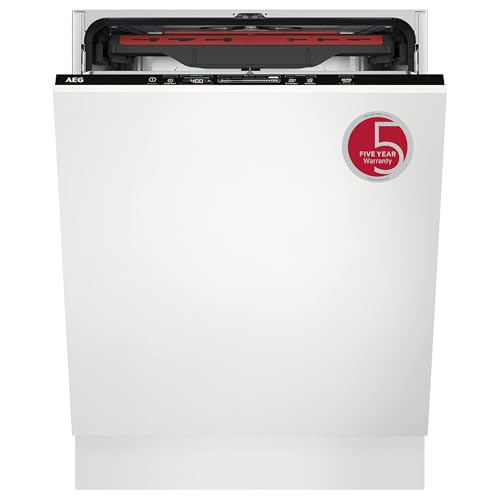


When it comes to caring for our clothes, one of the biggest concerns is preventing them from fading. Over time, the vibrant colors of our favorite pieces can start to dull, leaving us with a wardrobe that looks tired and worn out. Many people believe that adding salt to the laundry can help prevent this fading. But is there any truth to this popular home remedy?
The answer may surprise you. While it is true that salt has long been used as a natural dye fixative, helping to set the color in fabric, it does not necessarily prevent fading. Salt can help to retain the color in newly dyed clothes, as well as stop the bleeding of colors from one garment to another. However, when it comes to preventing long-term fading caused by repeated washing and exposure to sunlight, salt alone is not a foolproof solution.
So, what can you do to keep your clothes looking vibrant and prevent fading?
Can Salt Prevent Clothes from Fading?

One common belief is that adding salt to your laundry can prevent clothes from fading. But is there any truth to this claim? Let’s explore the surprising truth.
The Theory Behind Adding Salt to Laundry

The idea behind adding salt to laundry is that it can help set the dye in the fabric and prevent it from fading during the wash. Salt is believed to create a barrier between the water and the fabric, reducing the chances of color bleeding and fading.
Does Salt Actually Prevent Fading?
While salt may have some minor benefits for certain types of fabric, it is not a foolproof method for preventing clothes from fading. The effectiveness of salt largely depends on the type of dye used and the specific fabric.
In some cases, adding salt to the wash can cause the colors to appear brighter and more vibrant initially. However, this effect may not last long, and over time, the colors may still fade.
Other Factors Affecting Color Fading
While salt may not be the magical solution to prevent clothes from fading, there are other factors that play a significant role in color fading:
- Sunlight: Exposure to sunlight can cause fabrics to fade over time. It is advisable to dry clothes in the shade or use a clothesline indoors to minimize color fading.
- Detergents: Harsh detergents can strip away the color from fabrics. Using a gentle detergent designed for colored clothes can help preserve the vibrancy of the colors.
- Washing Method: Aggressive washing techniques like using hot water, excessive agitation, or drying clothes in high heat can contribute to color fading. Opt for gentle wash cycles and air drying whenever possible.
- Quality of Dye: The quality of the dye used in the fabric plays a crucial role in how well it retains its color. Cheaper dyes are more likely to fade faster compared to high-quality dyes.
The Bottom Line
While adding salt to laundry may have some minor benefits, it is not a guaranteed method for preventing clothes from fading. To protect your clothes from color fading, it is important to consider other factors like sunlight exposure, detergent choice, washing method, and the quality of the dye used in the fabric.
By taking proper care of your clothes and following the right laundry practices, you can prolong the life of your garments and maintain their color vibrancy for longer periods.
Understanding the Impact of Salt on Fabric Color
Salt is a common household ingredient that is often used for cooking and preserving food. It is also believed to have some benefits when it comes to preventing colors from fading in clothing. But does salt really have an impact on fabric color? Let’s find out.
How Does Salt Help?
When you wash your clothes, the water you use can have a pH level that is higher or lower than the natural pH level of the fabric. This difference in pH can cause the fabric’s color molecules to break down, resulting in color fading or bleeding.
Adding salt to your laundry can help neutralize the pH level of the water and minimize the color-altering effects. Salt acts as a buffer, preventing the water from becoming too alkaline or acidic, which can be damaging to the fabric’s color.
How to Use Salt for Preventing Color Fading
If you want to use salt to prevent color fading in your clothes, follow these steps:
- Check the care label on your clothes to ensure that they can be safely washed with salt.
- Before washing, dissolve half a cup of salt in a bucket of water. Stir until the salt is completely dissolved.
- Add the saltwater solution to your washing machine along with your detergent.
- Select the appropriate wash cycle and temperature as recommended by the clothing manufacturer.
- Once the wash cycle is complete, remove your clothes from the machine and air dry them.
It is important to note that while using salt may help prevent color fading to some extent, it may not completely eliminate the risk. Some fabrics and dyes are more prone to fading than others, and the effectiveness of salt may vary depending on the specific garment.
Other Tips to Prevent Color Fading
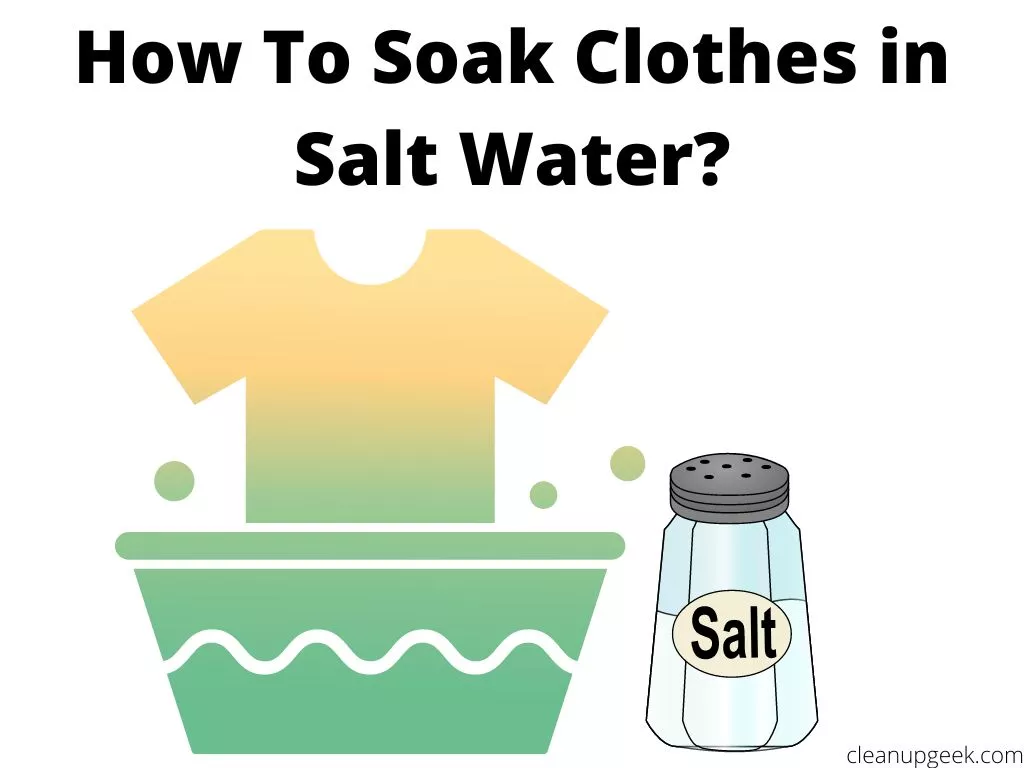
In addition to using salt, here are some other tips to help prevent color fading in your clothes:
- Wash your clothes inside out to minimize friction and rubbing against other garments.
- Use a gentle or delicate wash cycle instead of harsh cycles that can be rough on fabrics.
- Avoid using excessive detergent, as leftover detergent residue can contribute to color fading.
- Always separate your dark and light-colored clothes to avoid color bleeding.
- Avoid direct sunlight when drying your clothes, as prolonged exposure to sunlight can cause colors to fade.
Conclusion

While salt can help prevent color fading in clothes to some extent, it is not a foolproof solution. It is still important to follow care instructions on clothing labels and take additional precautions to preserve the vibrancy of your fabrics’ colors. By understanding the impact of salt and implementing proper washing practices, you can help extend the lifespan of your favorite garments.
Exploring the Role of Salt as a Natural Dye Fixative
Salt has been used for centuries as a natural dye fixative. When applied in the dyeing process, it helps set the color on the fabric, preventing it from fading quickly. Let’s dive into the science behind using salt as a dye fixative and how it can help preserve the vibrant colors of your clothes.
The Science of Salt as a Dye Fixative
When fabric is dyed, the dye molecules need to bond with the fabric fibers to create a lasting color. Salt plays a crucial role in this process. It is hygroscopic, meaning it attracts and retains moisture. When salt is added to the dye bath, it helps to create an environment that promotes the absorption of dye molecules by the fabric fibers.
The presence of salt reduces the solubility of the dye molecules in the dye bath, forcing the dye to attach to the fabric fibers instead. The ions in the salt also interact with the dye molecules, creating an electrostatic bond that enhances the dye’s adherence to the fabric. This bond ensures that the color remains on the fabric even after repeated washes.
Benefits of Using Salt as a Dye Fixative
- Color Retention: By using salt as a dye fixative, you can help your clothes retain their vibrant colors for a longer period. The strengthened bond between the dye and fabric fibers prevents the dye from fading quickly.
- Easy Application: Using salt as a dye fixative is a simple and cost-effective method. All you need is common table salt and a dye bath to achieve optimal color retention.
- Natural and Environmentally Friendly: Salt is a natural and environmentally friendly alternative to chemical fixatives. It does not contribute to pollution and can be safely used in the dyeing process.
How to Use Salt as a Dye Fixative
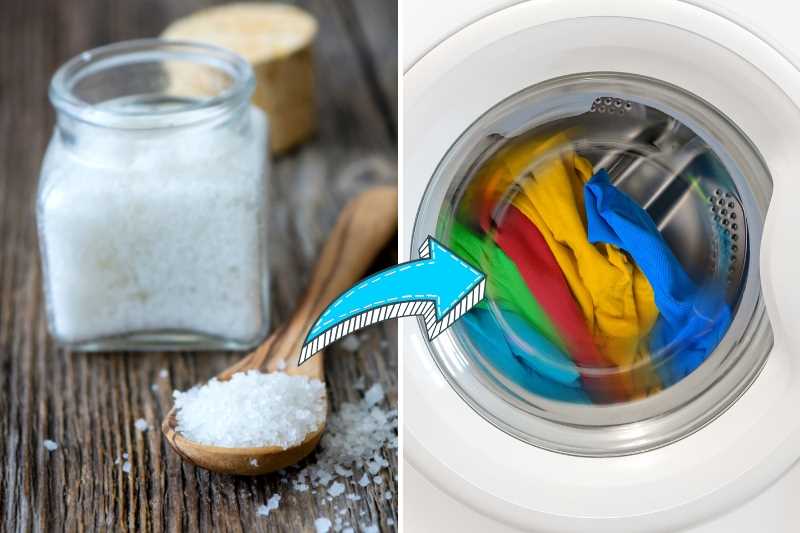
Using salt as a dye fixative is relatively easy. Here’s a simple guide to help you get started:
- Prepare a dye bath by dissolving the dye in water according to the instructions provided.
- Add salt to the dye bath. A general rule of thumb is to use one cup of salt for every gallon of water.
- Immerse the fabric in the dye bath and let it soak for the recommended duration.
- After the dyeing process is complete, rinse the fabric thoroughly to remove any excess dye and salt.
- Allow the fabric to air dry or follow the recommended drying instructions.
Conclusion
Salt serves as a natural dye fixative, helping to set the color and preserve the vibrancy of dyed fabric. Its ability to enhance the bonding between the dye molecules and fabric fibers is key to preventing premature fading. By incorporating salt into your dyeing process, you can enjoy long-lasting, colorful garments without relying on harsh chemical fixatives.
The Surprising Effects of Salt on Different Types of Fabrics
Introduction:
When it comes to caring for our clothes, we all want them to last as long as possible. Fading is a common problem that many of us encounter, but can salt be the solution? Let’s explore the surprising effects of salt on different types of fabrics.
1. Synthetic Fabrics
Synthetic fabrics, such as polyester, nylon, and acrylic, are known for their durability and resistance to fading. However, adding salt to the laundry can actually have a negative effect on these fabrics. Salt can weaken the fibers and cause them to break down over time, leading to fading and deterioration.
2. Natural Fabrics
Natural fabrics, such as cotton, linen, and silk, can benefit from the addition of salt to the washing process. Salt helps to set the dyes in these fabrics, preventing them from bleeding or fading. It also helps to remove any residual soap or detergent, leaving the fabric looking vibrant and fresh.
3. Dark-colored Fabrics
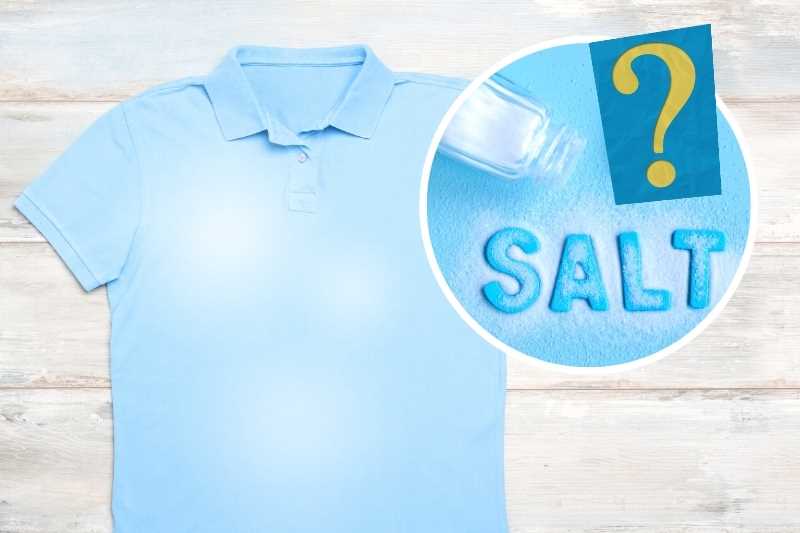
If you’re worried about your dark-colored clothes fading, salt can be a useful ally. Adding salt to the wash helps to lock in the color and prevent it from bleeding or fading. It also helps to remove any extra dye that may be present in the fabric, ensuring that your dark clothes stay dark for longer.
4. Delicate Fabrics
Delicate fabrics, such as wool or silk, require extra care to prevent fading and damage. Salt can be a gentle and effective solution for these fabrics. By adding salt to the wash, you can help to preserve the color and shape of delicate garments, extending their lifespan and maintaining their beauty.
5. Exercise Clothing
Exercise clothing, made from synthetic fabrics like polyester and spandex, often faces fading and odor problems due to sweat and frequent washing. Adding salt to the laundry can help prevent fading and remove unpleasant odors, keeping your exercise clothes looking and smelling fresh.
Conclusion
While salt may not be a magic solution to prevent fading in all types of fabrics, it can have surprising effects on certain materials. Natural fabrics, dark-colored clothes, delicate garments, and exercise clothing can all benefit from the addition of salt in the laundry. However, it’s important to remember that too much salt can be harmful, so always use it in moderation and follow the care instructions on your clothing labels for best results.
Debunking Common Myths about Salt and Clothes Fading
Myth: Salt can prevent clothes from fading.
One common myth about preventing clothes from fading is the use of salt. Many people believe that adding salt to the washing machine can help preserve the color of their clothes. However, this is not entirely true. While salt can have some benefits in certain laundry situations, it does not prevent clothes from fading.
Understanding the role of salt in laundry
Salt can be used in laundry for various purposes, such as brightening colors, removing stains, or preventing colors from bleeding. However, the misconception that salt can prevent clothes from fading stems from its reputation as a color fixative for fabrics like cotton or linen. This is because salt can help set dyes in these fabrics, making the color appear more vibrant. However, fading occurs primarily due to other factors, such as exposure to sunlight and the use of harsh detergents.
The main causes of clothes fading
Clothes fading can happen for several reasons, including:
- Exposure to sunlight: Ultraviolet (UV) radiation from the sun can break down the color molecules in fabric, causing them to fade over time.
- Harsh detergents: Certain detergents contain chemicals that can strip away the color from clothes, leading to fading.
- Repeated washing: The constant agitation and friction during washing can also contribute to clothes fading, especially if the garments are washed frequently or with abrasive fabrics.
Effective steps to prevent clothes fading
To protect your clothes from fading, it is important to take certain steps:
- Wash clothes inside out: Turning your clothes inside out before washing can protect the outer surface, reducing fading caused by friction.
- Use cold water: Washing clothes in cold water can help preserve the color and prevent fading.
- Choose a gentle detergent: Opt for a mild detergent specifically designed for colored clothing to minimize color loss.
- Avoid excessive washing: Washing clothes too frequently can accelerate fading, so try to wash them only when necessary.
- Line dry or use low heat: Avoid using high heat when drying clothes, as it can further degrade the color. Instead, hang them to dry or use the lowest heat setting on your dryer.
In conclusion, while salt can have certain benefits in laundry, it cannot prevent clothes from fading. Understanding the main causes of clothes fading and taking the necessary steps to protect your garments can help preserve their color and prolong their lifespan.
Expert Tips for Preserving and Protecting Your Clothes from Fading
1. Sort your laundry
One of the best ways to prevent clothes from fading is to sort your laundry properly before washing. Separate your clothes based on color and fabric type to prevent dyes from bleeding and causing fading. Wash dark colors together, light colors together, and delicate fabrics separately.
2. Wash in cold water
Hot water can cause colors to fade faster, especially for delicate fabrics. Washing your clothes in cold water not only helps preserve the color but also saves energy. Use a gentle cycle when washing to further protect your clothes from fading.
3. Turn clothes inside out
Turning your clothes inside out before washing can help minimize friction and rubbing against other clothes. This can help prevent fading caused by excessive friction during the washing process.
4. Use a gentle detergent
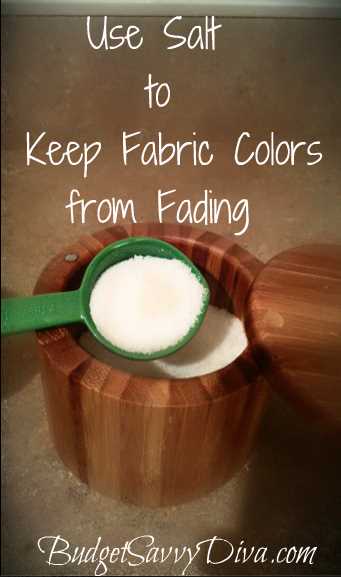
Choose a detergent specifically designed for delicate or colorful fabrics. Harsh detergents can strip away color, causing your clothes to fade. Look for detergents that are labeled as color-safe or gentle on fabrics.
5. Avoid overloading the washing machine
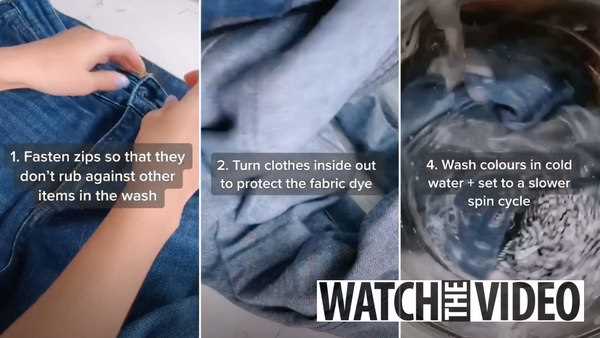
Overloading the washing machine can prevent clothes from getting cleaned properly and increase the chances of fading. Follow the recommended load capacity for your machine to ensure your clothes have enough space to move freely during the wash cycle.
6. Hang dry whenever possible

Avoid using the dryer as much as possible, as the heat can cause colors to fade. Hang your clothes to dry naturally in a well-ventilated area instead. If you must use the dryer, choose a low heat setting or use dryer balls to reduce drying time.
7. Store clothes properly
When storing clothes, make sure they are clean and completely dry. Avoid exposing them to direct sunlight or harsh artificial light, as these can cause fading over time. Store clothes in a cool, dry place to help preserve their color.
8. Use vinegar as a natural fabric softener
Add a cup of white vinegar to your wash cycle as a natural fabric softener. Vinegar can help remove detergent residue that can lead to fading. It also helps keep colors vibrant and reduces the risk of clothes fading.
9. Limit sun exposure
Avoid hanging colored clothes directly under the sun for extended periods. Sunlight can cause colors to fade over time. If you need to dry your clothes outside, ensure they are turned inside out or hang them in a shaded area.
10. Follow garment care instructions
Always check the care labels on your clothes for specific instructions on how to wash and care for them. Different fabrics require different care, and following these instructions can help prevent fading and damage.
By following these expert tips, you can extend the lifespan of your clothes and keep them looking vibrant for longer. Remember to take extra care when washing and storing your clothes to prevent fading and preserve their color.
FAQ
Can salt really prevent clothes from fading?
While salt is often touted as a natural solution to prevent clothes from fading, the truth is that it doesn’t have any significant effect on preventing fading. Salt is a common household item and can be used for various purposes, but preventing clothes from fading is not one of them.
What are some effective ways to prevent clothes from fading?
There are several effective ways to prevent clothes from fading. One of the most important steps is to wash clothes in cold water instead of hot water, as hot water can cause colors to fade. Additionally, turning clothes inside out before washing can help protect the outer surface. Using a gentle cycle and mild detergent, and avoiding over-drying clothes can also help prevent fading. Finally, storing clothes away from direct sunlight can help preserve their colors.
Why do clothes fade in the first place?
Clothes can fade due to various factors. One of the main reasons is exposure to sunlight, which contains ultraviolet (UV) rays that can break down the dyes in fabrics. The type of fabric and dye used can also affect how quickly clothes fade. Harsh detergents, excessive heat during washing and drying, and friction from wearing and washing can all contribute to fading as well.
Is it true that salt can help set the color of new clothes and prevent bleeding?
No, it is not true that salt can help set the color of new clothes or prevent bleeding. While some people believe that soaking new clothes in saltwater can help set the color and prevent bleeding, there is no scientific evidence to support this claim. To prevent bleeding, it is best to follow the care instructions on the clothing label and wash new clothes separately or with similar colors.
Are there any other natural alternatives to prevent clothes from fading?
While salt may not be effective in preventing clothes from fading, there are other natural alternatives you can try. For example, adding vinegar to the wash cycle can help set colors and prevent fading. Another option is to use laundry detergents specifically designed to protect colors. These detergents often contain ingredients like enzymes and optical brighteners that can help maintain the vibrancy of colors.

